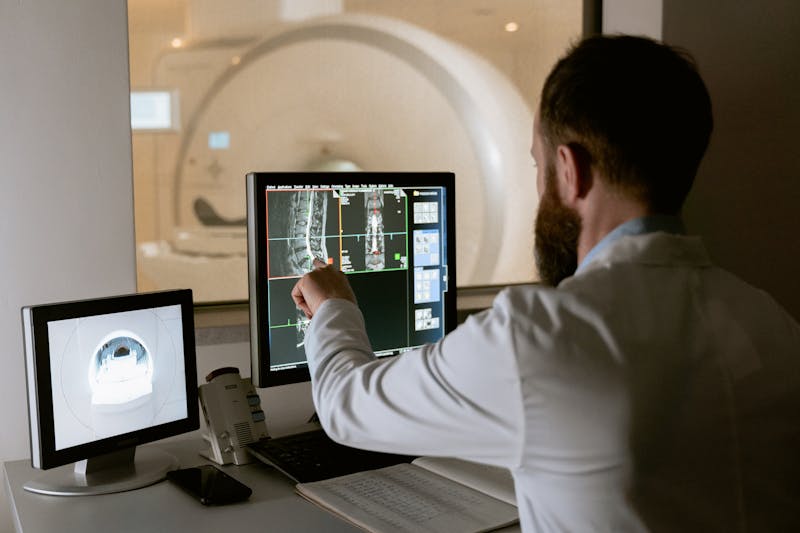Do you ever wonder about the intricate mechanisms that power the field of healthcare, and the delicate checks and balances systems employed in your health journey? Have you considered the significance of streamlined communication, particularly when it pertains to radiology reporting? Most importantly, have you contemplated how backlog radiology reporting can impact patient care and treatment? This piece delves into the depths of this complex, yet pertinent subject, unraveling the mystery around backlog radiology reporting and its implications for patient care.
Radiology, a key player in diagnosis and treatment, can be overwhelmed by backlog reporting, affecting patient care and outcomes. Here, we explore the role of radiology in healthcare, how backlogs can occur, their effects, preventative and management measures, presenting a holistic understanding of backlog radiology reporting.
Information is vital to the healthcare system. However, when vital information such as radiology reports build-up unaddressed— a phenomenon referred to as backlog, the overall patient care quality may be compromised.
 |
| Backlog Radiology Reporting |
The Role of Radiology in Healthcare - Unveiling its Importance
Radiology forms the backbone of modern healthcare, offering clinicians valuable insights into their patients' health status. From ultrasounds, X-rays, MRIs, to CT scans, radiological methods play a pivotal role in capturing the inner workings of the human body. This wealth of information aids in early detection, precise diagnosis, and informed treatment plans, contributing significantly to effective patient management.
Radiology not only provides definitive diagnostic data but also facilitates interventional procedures, such as biopsies or treating blocked arteries. Thus, not only does it guide treatment strategies, but it also directly contributes to patient recovery.
Unsurprisingly, the function of radiology has evolved beyond diagnostic assistance to an integrated, comprehensive patient care approach, making the expedient management of radiology reports critical for positive health outcomes.
How Backlog Radiology Reporting Occurs? – The Unfortunate Reality
Despite the remarkable biomedical advancements, the grim reality of backlog radiology reporting hovers over the healthcare industry. Backlogs arise from multiple sources: system inefficiencies, high patient influx, and limited resources.
An increasing patient load without a proportionate surge in staffing or technology advancements fuels this issue. Adversely, backlogs compound when organizations fail to adequately prioritize or manage reports effectively.
The COVID-19 pandemic has further exacerbated backlog radiology reporting, as hospitals worldwide grapple with unprecedented patient loads, rendering radiology departments operating under severe constraints, subsequently affecting their efficiency.
Patient Care and Treatment: Caught in the Crossfire
Where does the patient stand amongst this? The principal victims of backlog radiology reporting delayed diagnosis and treatment, compromised healthcare, and heightened anxiety levels.
Irrespective of the cause, backlog radiology reporting disrupts the flow of critical patient information, extending diagnosis times and delaying treatment initiation or modification. When healthcare providers cannot access crucial information, it hampers their ability to provide optimal care, gravely affecting the patient's well-being and their faith in the healthcare system.
 |
| Backlog Radiology Reporting |
The Silver Lining - Tackling Backlog Radiology Reporting
Despite the challenges, several measures can help mitigate backlog radiology reporting. Technological advancements offer promising solutions. For instance, artificial intelligence (AI) can automate report prioritization, improving workflow efficiency.
AI and other technologies can also integrate radiology reports with Electronic Health Records (EHR), promoting seamless communication between healthcare providers. While promising, these measures require substantial investment and careful implementation.
Moreover, while technology seems to be the magic bullet, it inevitably bears the risk of cyber threats. Hence, adequate safety and security measures are integral to maintain the data integrity of these platforms.
Future Perspectives - The Path Forward
Backlog radiology reporting represents a significant challenge in healthcare, demanding immediate and sustainable solutions. As we move forward, striking a balance between technological advancements and traditional resources becomes pivotal.
Adapting to newer technologies to streamline operations, incorporating effective prioritization algorithms, and upskilling staff to effectively use these platforms will unlock the full potential of radiology in healthcare.
Conclusion
Backlog radiology reporting, though unseen by patients, dramatically impacts patient care and treatment. This silent issue turns critical when unaddressed, delaying diagnosis, altering treatment plans, and compromising overall healthcare quality. Radiology departments must thus aim to minimize backlog reports, utilizing technology and efficient management to optimize patient care. Recognizing the importance of integrated, comprehensive patient healthcare, such proactive measures will pave the path to a more efficient and effective healthcare system.











No comments:
Post a Comment